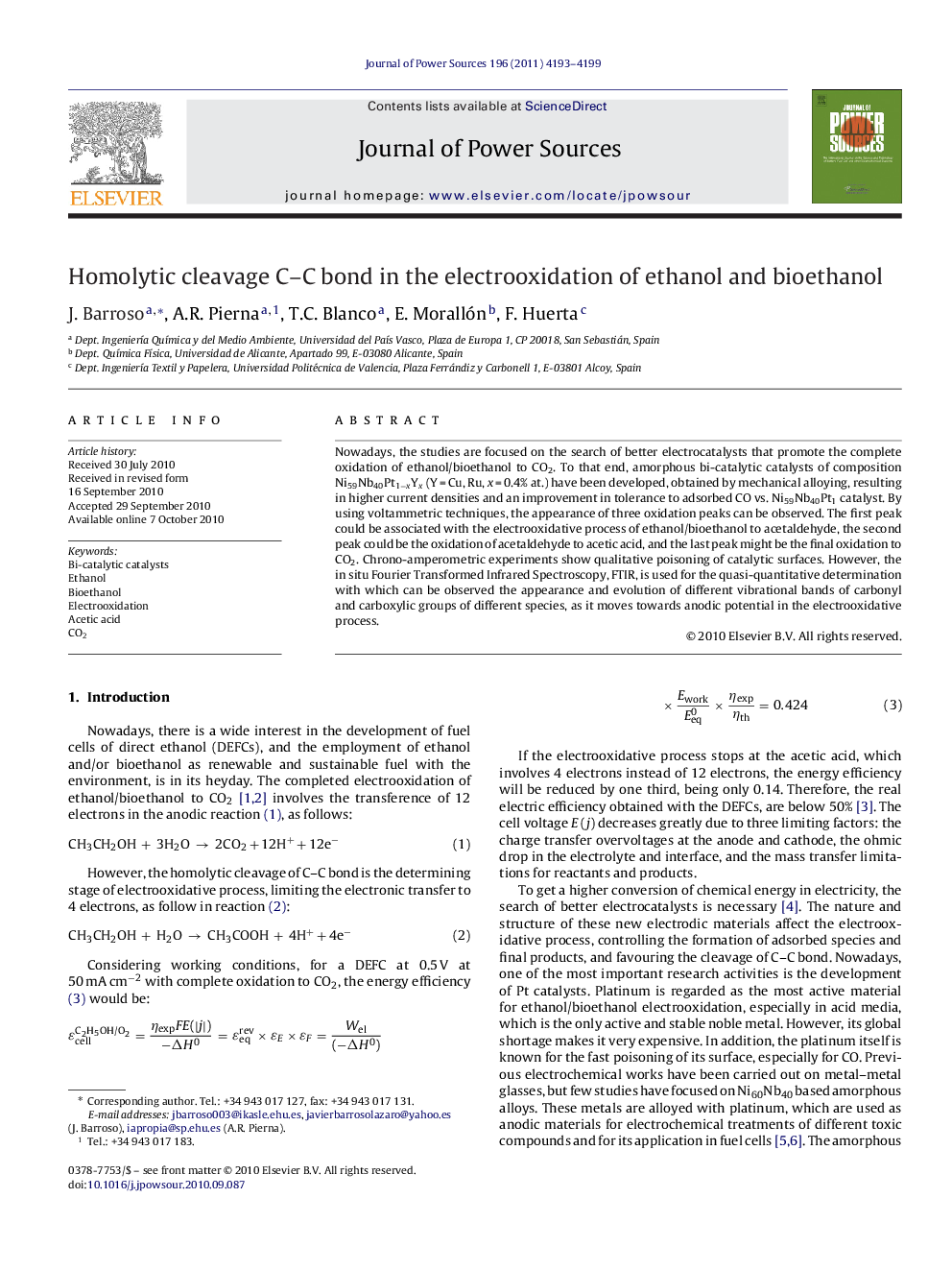| Article ID | Journal | Published Year | Pages | File Type |
|---|---|---|---|---|
| 1289113 | Journal of Power Sources | 2011 | 7 Pages |
Nowadays, the studies are focused on the search of better electrocatalysts that promote the complete oxidation of ethanol/bioethanol to CO2. To that end, amorphous bi-catalytic catalysts of composition Ni59Nb40Pt1−xYx (Y = Cu, Ru, x = 0.4% at.) have been developed, obtained by mechanical alloying, resulting in higher current densities and an improvement in tolerance to adsorbed CO vs. Ni59Nb40Pt1 catalyst. By using voltammetric techniques, the appearance of three oxidation peaks can be observed. The first peak could be associated with the electrooxidative process of ethanol/bioethanol to acetaldehyde, the second peak could be the oxidation of acetaldehyde to acetic acid, and the last peak might be the final oxidation to CO2. Chrono-amperometric experiments show qualitative poisoning of catalytic surfaces. However, the in situ Fourier Transformed Infrared Spectroscopy, FTIR, is used for the quasi-quantitative determination with which can be observed the appearance and evolution of different vibrational bands of carbonyl and carboxylic groups of different species, as it moves towards anodic potential in the electrooxidative process.
